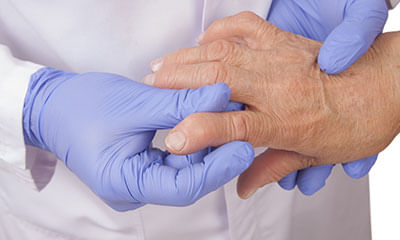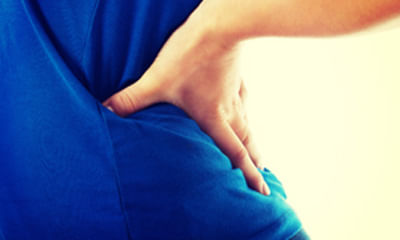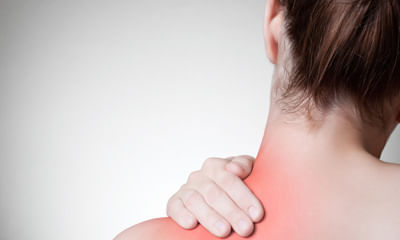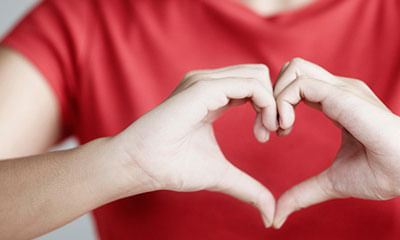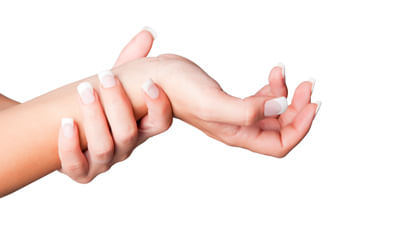Can Wrist Pain Be Heart Related
My mother have rheumatoid arthritis since 5 year. Now she get unbearable join pain. In last 6 month she has medical hist ...
Ask Free Question
The "normal" range (or negative test result) for rheumatoid factor is less than 14 iu/ml. Any result with values 14 iu/ml or above is considered abnormally high, elevated, or positive. Treatmentthere is no cure for rheumatoid arthritis. But clinical studies indicate that remission of symptoms is more likely when treatment begins early with medications known as disease-modifying antirheumatic drugs (dmards). Medicationsthe types of medications recommended by your doctor will depend on the severity of your symptoms and how long you've had rheumatoid arthritis. •nsaids. Nonsteroidal anti-inflammatory drugs (nsaids) can relieve pain and reduce inflammation. Over-the-counter nsaids include ibuprofen (advil, motrin ib) and naproxen sodium (aleve). Stronger nsaids are available by prescription. Side effects may include stomach irritation, heart problems and kidney damage. •steroids. Corticosteroid medications, such as prednisone, reduce inflammation and pain and slow joint damage. Side effects may include thinning of bones, weight gain and diabetes. Doctors often prescribe a corticosteroid to relieve acute symptoms, with the goal of gradually tapering off the medication. •disease-modifying antirheumatic drugs (dmards). These drugs can slow the progression of rheumatoid arthritis and save the joints and other tissues from permanent damage. Common dmards include methotrexate (trexall, otrexup, others), leflunomide (arava), hydroxychloroquine (plaquenil) and sulfasalazine (azulfidine). Side effects vary but may include liver damage, bone marrow suppression and severe lung infections. •biologic agents. Also known as biologic response modifiers, this newer class of dmards includes abatacept (orencia), adalimumab (humira), anakinra (kineret), baricitinib (olumiant), certolizumab (cimzia), etanercept (enbrel), golimumab (simponi), infliximab (remicade), rituximab (rituxan), sarilumab (kevzara), tocilizumab (actemra) and tofacitinib (xeljanz). These drugs can target parts of the immune system that trigger inflammation that causes joint and tissue damage. These types of drugs also increase the risk of infections. In people with rheumatoid arthritis, higher doses of tofacitinib can increase the risk of blood clots in the lungs. Biologic dmards are usually most effective when paired with a nonbiologic dmard, such as methotrexate. Therapy your doctor may send you to a physical or occupational therapist who can teach you exercises to help keep your joints flexible. The therapist may also suggest new ways to do daily tasks, which will be easier on your joints. For example, you may want to pick up an object using your forearms. Assistive devices can make it easier to avoid stressing your painful joints. For instance, a kitchen knife equipped with a hand grip helps protect your finger and wrist joints. Certain tools, such as buttonhooks, can make it easier to get dressed. Catalogs and medical supply stores are good places to look for ideas. Surgeryif medications fail to prevent or slow joint damage, you and your doctor may consider surgery to repair damaged joints. Surgery may help restore your ability to use your joint. It can also reduce pain and improve function. Rheumatoid arthritis surgery may involve one or more of the following procedures: •synovectomy. Surgery to remove the inflamed lining of the joint (synovium) can be performed on knees, elbows, wrists, fingers and hips. •tendon repair. Inflammation and joint damage may cause tendons around your joint to loosen or rupture. Your surgeon may be able to repair the tendons around your joint. •joint fusion. Surgically fusing a joint may be recommended to stabilize or realign a joint and for pain relief when a joint replacement isn't an option. •total joint replacement. During joint replacement surgery, your surgeon removes the damaged parts of your joint and inserts a prosthesis made of metal and plastic. Surgery carries a risk of bleeding, infection and pain. Discuss the benefits and risks with your doctor. Rheumatoid arthritis multiple joint pains / early morning painit is called as rheumatic arthritis. Treatment goals •to protect the joint from further damages. •provide pin relief. •prevent deformity and disabilities. •increase functional capacity. •improve flexibility and strength. •encourage regular exercise. •improve general fitness. Physiotherapy modalities - hot/cold applications- electrical stimulation- hydrotherapy and spa therapy rehabilitation treatment technique - rest and splinting - compression gloves - assistive devices and adaptive equipment - massage therapy - therapeutic exercise - patient education assistive devices and adaptive equipment occupational therapy improves functional ability in patients with ra. Occupational therapy interventions such as assistive devices and adaptive equipments have beneficial effects on joint protection and energy conservation in arthritic patients.Assistive devices are used in order to reduce functional deficits, to diminish pain, and to keep patients' independence and self-efficiency. Loading over the hip joint may be reduced by 50% by holding a cane. In fact, most of these instruments are originally designed for patients with neurologic deficits; therefore, certain adaptations may be needed for them to be used in patients with arthritis. Elevated toilet seats, widened gripping handles, arrangements related with bathrooms, etc. Might all facilitate the daily life. The procedures needed to increase compliance of the patient with the environment and to increase functional independence are +mainly determined by the occupational therapist. Massage therapy that improves flexibility, enhances a feeling of connection with other treatment modalities, improves general well being, and can help to diminish swelling of inflamed joints. Massage is found to be effective on depression, anxiety, mood, and pain. Therapeutic exercise every joint should be moved in the rom at least once per day in order to prevent contracture. In the case of acutely inflamed joints, isometric exercises provide adequate muscle tone without exacerbation of clinical disease activity. Moderate contractures should be held for 6 seconds and repeated 5–10 times each day. Dynamic exercise therapy in improving joint mobility, muscle strength, aerobic capacity and daily functioning in patients with rheumatoid arthritis (ra). Finally, in chronic stage with inactive arthritis, conditioning exercises such as swimming, walking, and cycling with adequate resting periods are recommended. They increase muscle endurance and aerobic capacity and improve functions of the patient in general, and they also make the patient feel better. It might be due to lack of blood circulation which is the reason for you to have scrotum pain / back pain. You have to do basic aerobic exercises for you to become fit and also to maintain the blood circulation and tone. Patient education in patients with ra, sociopsychological factors affecting the disease process such as poor social relations, disturbance of communication with the environment, and unhappiness and depression at work are commonly encountered. The treatment of rheumatic diseases should provide education and information to their patients about their condition and the various physical therapy and rehabilitative options that are available to improve their quality of life. Passive treatments for rheumatoid arthritis •cold therapy reduces circulation, which ultimately decreases swelling. For example, a cold compress may be placed on the painful area. •cold therapy in acute phase •dosage 10-20mints/1-2 times a day. •heat therapy eases muscle tension and gets blood to flow more quickly to the painful area. For example, a moist, warm cloth may be used to promote circulation. •heat therapy in chronic phase •dosage 20-30mints/1-2 times a day. •hydrotherapy involves reducing your ra-related pain and other symptoms with water. With hydrotherapy, you will be submerged in warm water to relieve your symptoms. •massage can help reduce muscle tension and promote good circulation. It's also a fantastic way to help you manage stress (especially important for people with rheumatoid arthritis). •transcutaneous electrical nerve stimulation (tens) works by blocking pain signals from getting to your spinal cord. It also helps decrease muscle spasms. •tens short term pain relief (6 to 18 hrs) •ultrasound creates warmth using sound waves, whichenchanes circulation and decreases joint pain, inflammation, and stiffness. Exercise for acute phase: •preformed exercise at least once a day. •general assisted movement through normal range (joint mobilisation). •isometric-“static movements” helps to maintain muscle tone without increasing inflammation. Exercise for the chronic phase: •can progress the above exercise to include use of light resistance. •postural/core stability exercises. •swimming/walking/cycling to maintain cardiovascular fitness. •gentle stretch for areas that become tight, such as knees &calves. Regular exercises: •maintaing muscle strength is important for joint stability & preventing injury. •muscles can become weak following reduced activity. •pain signals from yours nerves and swelling can both inhibits muscles. •muscle length can be affected by prolonged positions immobilization and tightness can limit daily activities. Alternative therapies: •thi chi. •musical therapy. •yoga therapy. •relaxation techniques. •pilates. Active treatments for rheumatoid arthritis •flexibility and strengthening exercises improve your range of motion and help you build muscle strength. Yoga and pilates are flexibility and strengthening exercises. •low-impact aerobic exercise is gentle but effective at helping you manage rheumatoid arthritis symptoms. Light walking is an example of this type of exercise. Your physical therapist will let you know how often to do these exercises. For example, you may need to do a few specific exercises 3 times a day, or your physical therapist may recommend a routine that incorporates 30 minutes of low-impact aerobic exercise a day and 30 minutes of strengthening exercises every other day. If your pain is more in the proximal joints, ie.in the upper limbs if the pain is present in the fingers/wrist and in the lower limbs it the pain is present in the toes/ ankle, then we shall definitely say it is rheumatic arthritis. Wear elbow brace and wrist brace which will make her to feel warm and that will make the joints become firm. Hot water fermentation will helpknee cap will also help to prevent the damaged cartilagesif your pain is more in the distal joints, ie. In the upper limbs if the pain is present in the fingers/wrist and in the lower limbs it the pain is present in the toes/ ankle, then we shall definitely say it is rheumatic arthritis. If your proximal joints (ie. Shoulder, hip & knee has pain) then you can pour hot (warm) water in that area to reduce the inflammation. If you have pain in the distal joints ie. Wrist, fingers, ankle, toes then you can wear either elbow brace or wrist brace which will help you to feel warm and very protective. And also immerse the distal joints in the hot water tub which will help you to reduce the pain. Knee pain during driving or watching movie. It might due to lack of movements in the knee while the joints are immobilized during driving and while watching movies. It is important that you need to have movements in and around the knee so that the blood flow will not be disturbed.
Hello doctor sometimes I have pain in my rest which last for seconds. I also have neck, shoulder and left hand pain on t ...
Ask Free Question
Regards Lybrate user. Pain in the shoulder & left arm may occur due to referred pains from neck, heart, at times stomach. If there is pain or limitation of movements in the neck and if the neck pain worsens proportionately with the shoulder/arm pain, they both could be related. Body structures around the shoulder itself may at times refer pain down the arm up to the wrist/hand. If shoulder movements are painful and/or limited, along with worsening of pain down the arm/forearm, then it could be related. Pain from the heart may also radiate to the same area. However, pain from heart will occur with activity when heart has to work more (for example climbing stairs, or jogging or lifting any weight). Rarely, heart related pains may occur even at rest or at sleep as well. It matters to find the symptoms and try to relate them logically to know which structures could be causing the disorder. It is recommended to consult an orthopaedician or orthopaedic physiotherapist for further evaluation. You may feel free to reach out to us for a virtual consult as well. You may use doctor code as drc221.
Hi does rheumatoid arthritis cause pain in heart. What test should I get it done. ...
Ask Free Question
Treatment goals •to protect the joint from further damages. •provide pin relief. •prevent deformity and disabilities. •increase functional capacity. •improve flexibility and strength. •encourage regular exercise. •improve general fitness. Physiotherapy modalities - hot/cold applications- electrical stimulation- hydrotherapy and spa therapy rehabilitation treatment technique - rest and splinting - compression gloves - assistive devices and adaptive equipment - massage therapy - therapeutic exercise - patient education assistive devices and adaptive equipment occupational therapy improves functional ability in patients with ra. Occupational therapy interventions such as assistive devices and adaptive equipments have beneficial effects on joint protection and energy conservation in arthritic patients.Assistive devices are used in order to reduce functional deficits, to diminish pain, and to keep patients' independence and self-efficiency. Loading over the hip joint may be reduced by 50% by holding a cane. In fact, most of these instruments are originally designed for patients with neurologic deficits; therefore, certain adaptations may be needed for them to be used in patients with arthritis. Elevated toilet seats, widened gripping handles, arrangements related with bathrooms, etc. Might all facilitate the daily life. The procedures needed to increase compliance of the patient with the environment and to increase functional independence are mainly determined by the occupational therapist. Massage therapy that improves flexibility, enhances a feeling of connection with other treatment modalities, improves general well being, and can help to diminish swelling of inflamed joints. Massage is found to be effective on depression, anxiety, mood, and pain. Therapeutic exercise every joint should be moved in the rom at least once per day in order to prevent contracture. In the case of acutely inflamed joints, isometric exercises provide adequate muscle tone without exacerbation of clinical disease activity. Moderate contractures should be held for 6 seconds and repeated 5–10 times each day. Dynamic exercise therapy in improving joint mobility, muscle strength, aerobic capacity and daily functioning in patients with rheumatoid arthritis (ra). Finally, in chronic stage with inactive arthritis, conditioning exercises such as swimming, walking, and cycling with adequate resting periods are recommended. They increase muscle endurance and aerobic capacity and improve functions of the patient in general, and they also make the patient feel better. Patient education in patients with ra, sociopsychological factors affecting the disease process such as poor social relations, disturbance of communication with the environment, and unhappiness and depression at work are commonly encountered. The treatment of rheumatic diseases should provide education and information to their patients about their condition and the various physical therapy and rehabilitative options that are available to improve their quality of life. Passive treatments for rheumatoid arthritis •cold therapy reduces circulation, which ultimately decreases swelling. For example, a cold compress may be placed on the painful area. •cold therapy in acute phase •dosage 10-20mints/1-2 times a day. •heat therapy eases muscle tension and gets blood to flow more quickly to the painful area. For example, a moist, warm cloth may be used to promote circulation. •heat therapy in chronic phase •dosage 20-30mints/1-2 times a day. •hydrotherapy involves reducing your ra-related pain and other symptoms with water. With hydrotherapy, you will be submerged in warm water to relieve your symptoms. •massage can help reduce muscle tension and promote good circulation. It's also a fantastic way to help you manage stress (especially important for people with rheumatoid arthritis). •transcutaneous electrical nerve stimulation (tens) works by blocking pain signals from getting to your spinal cord. It also helps decrease muscle spasms. •tens short term pain relief (6 to 18 hrs) •ultrasound creates warmth using sound waves, whichenchanes circulation and decreases joint pain, inflammation, and stiffness. Exercise for acute phase: •preformed exercise at least once a day. •general assisted movement through normal range (joint mobilisation). •isometric-“static movements” helps to maintain muscle tone without increasing inflammation. Exercise for the chronic phase: •can progress the above exercise to include use of light resistance. •postural/core stability exercises. •swimming/walking/cycling to maintain cardiovascular fitness. •gentle stretch for areas that become tight, such as knees &calves. Regular exercises: •maintaing muscle strength is important for joint stability & preventing injury. •muscles can become weak following reduced activity. •pain signals from yours nerves and swelling can both inhibits muscles. •muscle length can be affected by prolonged positions immobilization and tightness can limit daily activities. Alternative therapies: •thi chi. •musical therapy. •yoga therapy. •relaxation techniques. •pilates. Active treatments for rheumatoid arthritis •flexibility and strengthening exercises improve your range of motion and help you build muscle strength. Yoga and pilates are flexibility and strengthening exercises. •low-impact aerobic exercise is gentle but effective at helping you manage rheumatoid arthritis symptoms. Light walking is an example of this type of exercise. Your physical therapist will let you know how often to do these exercises. For example, you may need to do a few specific exercises 3 times a day, or your physical therapist may recommend a routine that incorporates 30 minutes of low-impact aerobic exercise a day and 30 minutes of strengthening exercises every other day. If your pain is more in the proximal joints, ie. In the upper limbs if the pain is present in the fingers/wrist and in the lower limbs it the pain is present in the toes/ ankle, then we shall definitely say it is rheumatic arthritis. Wear elbow brace and wrist brace which will make her to feel warm and that will make the joints become firm. Hot water fermentation will helpknee cap will also help to prevent the damaged cartilagesif your pain is more in the distal joints, ie. In the upper limbs if the pain is present in the fingers/wrist and in the lower limbs it the pain is present in the toes/ ankle, then we shall definitely say it is rheumatic arthritis. If your proximal joints (ie. Shoulder, hip & knee has pain) then you can pour hot (warm) water in that area to reduce the inflammation. If you have pain in the distal joints ie. Wrist, fingers, ankle, toes then you can wear either elbow brace or wrist brace which will help you to feel warm and very protective. And also immerse the distal joints in the hot water tub which will help you to reduce the pain.
Ms. nalini, my mother is suffering from rheumatoid arthritis from last 10 years, she is now 71 year old. Last 6 -8 month ...
Ask Free Question
If there is an acute exacerbation of symptoms like swelling and severe pain, involvement of new joints. Then there is some role of steroids. U need to show to orthopaedic/ rheumatologist to assess the activity level of disease, then only you can start steroids. If wanna consult me on video call my code is lcfbd7.
I have white patches on my scalp, and my body is more sensitive to heat and itchy and my face is dry. I often feel needl ...
Ask Free Question
Instead of guessing on symptoms. Take blood test to confirm. Take proper homoeopathic treatment to cure your complaints.
I am having pain in my left arm and upper part of the breast/ chest from last 6 months. Have been to many doctors. They ...
Ask Free Question
I Think you have acidity and muscular pain present to your body. Take proper food and do not take rich food. Do some free hand exercise regularly. DO breathing exercise regularly. Do hand exercise like wrist flexion and extension exercise and do various types of finger movement regularly.
My mother's heartbeat suddenly increases and she is also feeling some heaviness around her chest area. Actually, her hem ...
Ask Free Question
First thing forget about 5 th injection procedure. I usually give it in one hour. Increase in heart rate is due to anxiety, worry or stress. Her bp and pulse is within normal limit. So nothing is to be done.
I am 50 years old left hand fingers are feeling numb from 6 to 7 hours what should I do? ...
Ask Free Question
Pressure upon the arm nerves or vessels causing numbness, tingling or temporary paralysis of the arm may result from: Sleeping with the hand under the head Sitting with the arm hanging over the back of a chair Wearing straps or carrying a bag or rucksack Inflated cuff during measuring blood pressure Raising the Arms Above the Level of the Heart Keeping the hand (s) above the level of the heart during work or sleep can prevent appropriate blood perfusion of the hands, and cause numbness, tingling or partial paralysis of the hand (s) within few minutes. Cold In cold weather, narrowing of the arteries in the hands and fingers can prevent appropriate blood supply and thus numbness, tingling, pain or temporary paralysis of the hands and fingers. DISORDERS OF THE NECK (CERVICAL) SPINE Cervical Disk Syndrome Degenerative disc disease (DDD) or injury, like hyper-extension injury in car accidents (head moves rapidly toward the back), can result in bulging or herniated disc (s) pressing upon the cervical (neck) spinal nerves, thus causing symptoms of cervical disc syndrome: Position/movement dependent pain, tingling or numbness in the neck, shoulders, upper back, arm, hand or fingers (when the roots of cervical spinal nerves are compressed) Stumbling gait, difficulty with fine hand moves, tingling in the body or legs (when the cervical spinal cord is compressed) Symptoms can appear immediately after the injury, or develop slowly over the weeks or months. Diagnosis is made by a CT or MRI of the neck spine. Therapy includes immobilization, cold therapy followed by heat therapy, cervical traction, analgesics, muscle relaxants, physical therapy or surgical decompression of the nerve roots or spinal cord. Cervical Spondylosis Cervical spondylosis is an age-related deformation of the cervical spine; deformed vertebra or discs can press upon the spinal cord or nerve roots in the neck and cause chronic symptoms, like in the cervical disc syndrome (see above). INJURIES Disorders of the Brachial Plexus The brachial plexus is formed by the cervical nerves C5-C8 and thoracic nerve Th1. The plexus extends from the lower part of the neck to the armpit. From brachial plexus all main nerves to the arm (axillary, musculocutaneus, ulnar, radial, and median nerve) arise. Brachial Plexus Injuries Most of brachial plexus injuries usually occur in car, motorcycle and sport accidents, during birth, or in bullet or knife injuries. Symptoms and prognosis depend on the nerves involved and extent of an injury: nerve stretching, scar tissue (neuroma), partial or complete nerve rupture or tearing of the nerve from the spinal cord. A limp or paralyzed arm, severe pain and numbness, especially in the neck and shoulders, and weak arterial pulses in the arm are main symptoms. Some brachial plexus injuries may heal without treatment. Many children who are injured during birth improve or recover by 3 to 4 months of age. Treatment of brachial plexus injuries includes physical therapy and, if necessary, surgery. Thoracic Outlet Syndrome Thoracic outlet is the space between the collar bone (clavicle), first rib and corresponding ligaments through which nerves and vessels travel from the base of the neck toward the armpit. Thoracic outlet syndrome (TOS) results from a compression or extension of the subclavian artery or vein, or brachial plexus (nerves), commonly occurring in motorbike accidents, athletes, swimmers, weight lifters, etc. Symptoms include: Muscle wasting at the base of the thumb, numbness, feeling of pins and needles, or pain in the shoulder, armpit, arm or hand (when nerves are compressed) Pale, cool arm with weakened arterial pulse in the arm, numbness and pain (when vessels are compressed) Radiation-Induced Brachial Plexopathy Radiation-induced damage of the brachial plexus can follow radiotherapy of the chest, axillary region, thoracic outlet or neck. Symptoms may appear months to years after radiation therapy and include numbness, swelling, weakness or pain in the arm. Broken Shoulder Blade Shoulder blade (scapula) is the bone in the upper back that connects the collar bone (clavicle) and arm bone (humerus). Broken shoulder blade, usually from a car or motorbike accident, can result in pain, swelling, bruising or deformation of the shoulder blade area, and weakness, numbness or tingling in the shoulder or arm. Broken Arm, Wrist, Hand or Finger Symptoms of broken arm (the arm bone â humerus, elbow, and bones of the forearm â radius and ulna) include: Severe pain increasing with arm movement Obvious deformity, swelling, tenderness and bruising over the site of bone fracture Stiffness or inability to move your arm, hand or finger Weakness, numbness or tingling in the arm, hand or fingers Cubital Tunnel Syndrome or Ulnar Neuropathy The ulnar nerve arises from the brachial plexus in the neck and travels under the collar bone, downside along the inner side of the upper arm, behind the inner part of the elbow (Latin cubitus), where it can be felt as a âfunny boneâ and then down to the wrist, hand and little and ring finger. Ulnar nerve entrapment usually results from an elbow injury or constant pressure upon the elbow, like in cyclists or typists. Symptoms, known as cubital tunnel syndrome, include: Pain on the inner side of the elbow or electric shock sensation after touching the elbow The hand, ring and little finger are numb and falling asleep, especially after bending the elbow Limited movements of the ring and little finger (âhandlebar palsyâ in cyclists) Hand (on the little finger side) sensitivity to cold Prevention of ulnar nerve entrapment is by avoiding excessive elbow use. Treatment includes special arm exercises, anti-inflammatory drugs, like ibuprofen, and wearing an elbow splint. DISORDERS OF THE SPINAL CORD AND BRAIN Multiple Sclerosis Multiple sclerosis is a disease of an uncertain cause affecting the nerve tissue of the spinal cord, brainstem or brain. Symptoms can appear suddenly or gradually, âtravelâ among various body parts and include: numbness or tingling in one or both arms (or any other body part), blurred or double vision or blindness, weak or paralysed limbs, problems with urinating or defecating, difficulty maintaining balance, tiredness, etc. Symptoms can last from few weeks to several months, disappear completely and appear again, and, in general, worsen with time. Diagnosis is with MRI of the brain and spinal cord, and examination of cerebrospinal fluid obtained by lumbar punction. Apart from treating symptoms, there is no treatment for multiple sclerosis at the time. ACUTE BRACHIAL NEURITIS Acute brachial neuritis is a rare, supposedly autoimmune inflammation of brachial plexus, occurring at any age, but primarily in young men. Symptoms include severe pain in the upper arms and shoulders, followed by numbness and weak reflexes; the disorder resolves in few months on its own. WRIST DISORDERS Carpal Tunnel Syndrome (CTS) Carpal tunnel syndrome (Latin carpus = wrist) is a painful condition of the wrist, hand and fingers, caused by repetitive use of the wrist, or swelling of the tissues in the wrist, resulting in a pressure upon the median nerve. CTS is a common problem in assembly line workers, computer workers, musicians, mechanics, tennis players, etc. Bone spurs in rheumatoid arthritis, or fluid in hypothyroidism, kidney disease or menopause may also press on the median nerve. Symptoms usually start gradually and include: Tingling or numbness in the thumb, index, middle and ring finger and related part of the hand Pain in the wrist, palm or forearm Difficulty grasping small objects or gripping Hand pain at night Ganglion Cyst Ganglion cyst (Greek ganglion = tumor, cyst = fluid filled sac) is a soft lump, usually appearing on the back of the hand in some people between 20-40 years of age. It is a noncancerous fluid filled sack arising from the tendon sheets or capsule of the joint from an unknown reason. Ganglion cysts may not be always seen from the outside. Gymnasts often have them. Symptoms include: A soft lump or lumps of various size (may exceed an inch), on the back of the hand, inner side of the wrist, base of the finger, or on the last finger joint. Pain or numbness in the wrist, hand or finger (s) DISORDERS OF FINGER ARTERIES Raynaudâs Disease Raynaudâs disease is a painful finger condition due to spasms in the finger arteries. Disease may also affect toes or, rarely, nose, ears, lips and nipples. The cause is not known. Symptoms are triggered by cold (even short term cold like taking something from a freezer) or strong emotions, and appear in the following sequence: Fingers (one, more or all in one or both hands) become pale, numb or cold due to lack of blood flow, then bluish due to a lack of oxygen, then red, with throbbing pain and tingling as blood returns to the affected area. Attacks can occur daily, weekly or occasionally and can last from less than a minute to several hours, usually about 15 minutes. Different areas can be affected at different times. Severe, although rare, attacks can result in finger sores or tissue death (gangrene). Raynaudâs Phenomenon Raynaudâs phenomenon is a term used for the same finger symptoms as in Raynaudâs disease, when the cause is known. Causes include: connective tissue diseases, like scleroderma, systemic lupus erythematosus (SLE), Sjögrenâs syndrome, dermatomyositis, and polymyositis, carpal tunnel syndrome, obstructive arterial disease, anti-hypertensive drugs, ergotamine (used for treating migraine), chemotherapeutic medications, etc. In workers exposed to vinyl chloride, using vibrating tools, typists and pianists, Raynaudâs phenomenon also commonly occurs. DIAGNOSIS OF ARM NUMBNESS OR TINGLING History of arm numbness. Knowing an exact time course of tingling or numbness, and eventual arm weakness, head or legs involvement, history of arm or neck injuries, repetitive elbow or wrist use, reactions to cold, hypothyroidism, diabetes, menopause may give a strong evidence about the cause. Neurological examination. Testing of sensitivity of a particular arm dermatome can reveal which nerves are involved. Imaging. X-ray may reveal arthritis in the neck spine, or a broken arm bone. Myelography can reveal herniated disc or narrowed spinal canal. MRI and CT show soft tissues like tumors. Electromiography (EMG) and nerve conduction studies can show the nature of the nerve damage. Together with imaging they are important to evaluate the extent of brachial plexus injury. Blood tests can reveal diabetes, abnormalities in serum levels of sugar (diabetes), calcium, potassium, sodium, magnesium, vitamins B6 or B12, thyroxine (hypothyroidism), sex hormones (menopause). Cold simulation test can reveal Raynaudâs disease or phenomenon. TREATMENT OF ARM NUMBNESS OR TINGLING Firstly, the cause of numbness should be treated if possible. Non-steroid anti-rheumatic drugs like ibuprofen, or antidepressants, may relieve pain and numbness.
My father have a high creatinine value 1.81. How to reduce the creatinine Value to normal level. What are the problems w ...
Ask Free Question
If your creatinine is high than cut down whole cereals, nuts and green leafy vegetables first. If this will remain high it cause gout and joint pains, ostopenia problem, troffe problem.
I am 25 years old I have back pain in left leg it spreads over my buttocks to the leg. Whether it is disk problem or pir ...
Ask Free Question
From your symptoms I feel you are having sciatica. Sciatic pain can vary from infrequent and irritating to constant and incapacitating. Symptoms are usually based on the location of the pinched nerve. To manage new sciatica pain, you may find that certain positions and activities are more comfortable than others. The proper exercises from a physiotherapist will help reduce sciatic pain. The exercises recommended will depend on what's causing the sciatica. It's important to work with a specialist who has experience working with people with sciatica. It's also important to do the exercises exactly as directed. Here are some home treatments for sciatica which you can follow: -do not bend, lift, or sit in a soft, low chair; the pain will get worse. -try a cold pack to see if it helps the pain. If you don't have a cold pack, use a large bag of frozen vegetables; it makes a good first aid cold pack. -after the cold massages, try alternating with heat from hot bag. -you may feel better lying on your back on a firm surface with a pillow under knees. Another option is lying on side with a pillow between the knees to keep the back straight. Also, a recliner chair is helpful. -do activities one is able to tolerate. Best wishes.

